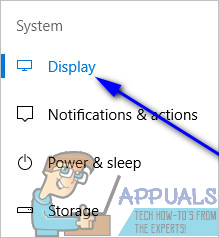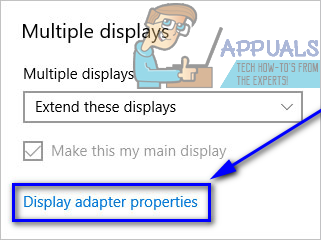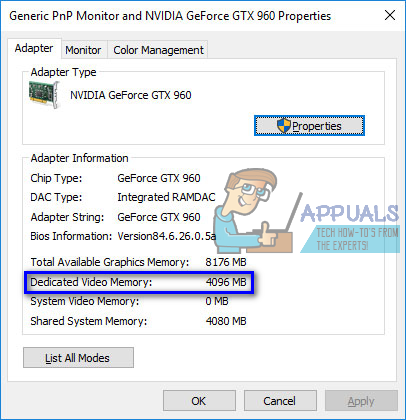Since how much VRAM a graphics card has plays a major role in determining just how good a graphics card is, almost every computer user with a dedicated graphics card wants to know how much video RAM their GPU has. Thankfully, doing this is a piece of cake, even on Windows 10 – the latest and greatest version of the Windows Operating System. On Windows 10, a user can go about checking how much VRAM they have on their computer using two different ways – one of them is a pretty straightforward process involving nothing apart from built-in system utilities, whereas the other uses a third-party application that is capable of doing a lot more than just telling you how much VRAM your graphics card has. To check how much VRAM a Windows 10 computer has, you can use one of the following methods:
Method 1: Using Display settings
All a Windows 10 user needs to do is go into their Display settings and, provided that they know exactly where to go next, they’ll be able to find out exactly how much VRAM their computer has. To use this method to check how much VRAM your graphics card has, you need to:
Method 2: Using CPU-Z
Windows 10 users can also use a third-party application known as CPU-Z to check exactly how much video RAM their computer has. CPU-Z, however, is good for a lot more than just checking how much VRAM a graphics card has – it can read a GPU’s genes and display every bit and piece of information it can find relating to it (from its entire model number to its current running temperature and even when it was manufactured). In addition, CPU-Z is also not limited to a computer graphics card – it even gets the scoop on all other important hardware such as the CPU, the computer’s RAM, and its cooling fans. To use CPU-Z to check how much video RAM your computer has, simply:
Method 3: Using DxDiag
Not many people know about it but there is a built-in tool in Windows where you can check your Computer’s Specifications and get to know about your Computer a bit more. It’s known as DxDiag, DxDiag is an official Microsoft tool that allows you to view system information and DirectX information relating to your video card and sound card. For using this tool you will have to follow these steps:-
How Much RAM Should You Have for AAA GamingHow Much Should You Actually Spend on A Motherboard?VRAM Allocation vs. VRAM Usage - What is the Difference?How to Check Which Graphics Card Do You Have on your PC or Laptop



